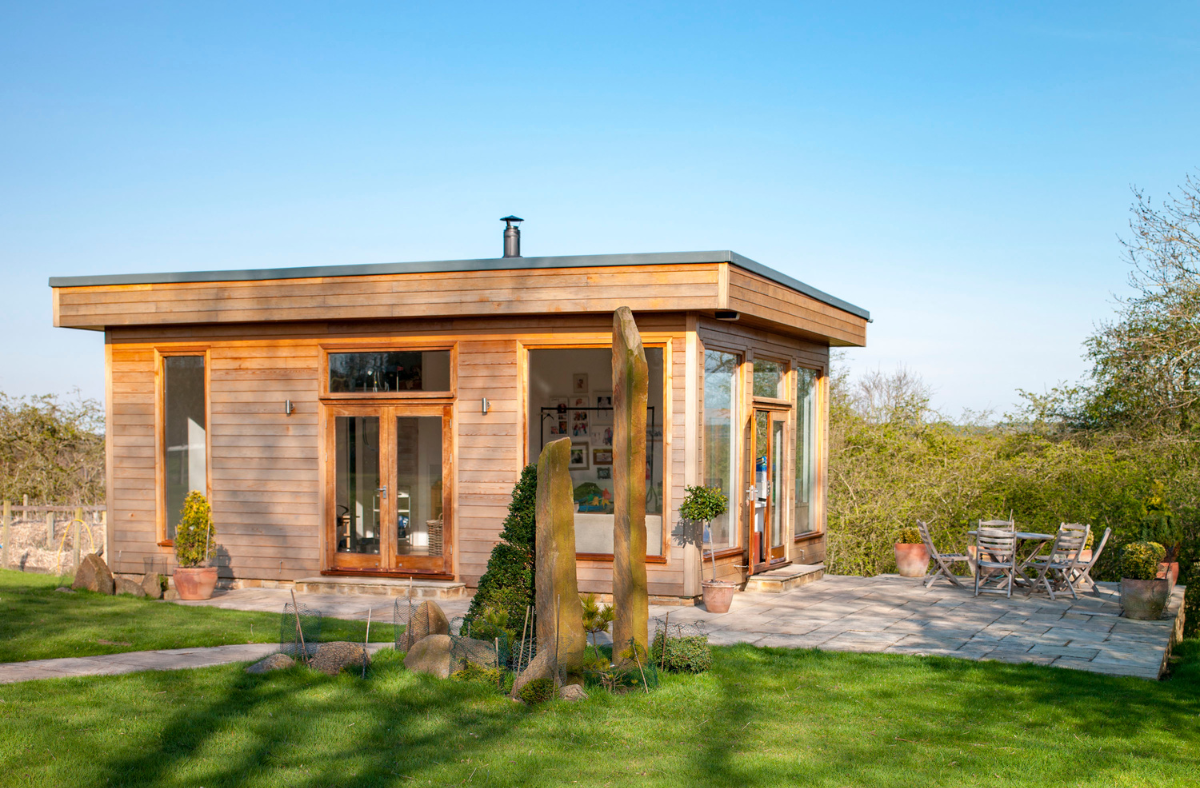The Most Common Log Cabin Problems and How to Avoid Them

When you think of log cabins, you probably imagine a quaint and rustic retreat away from the hustle and bustle of everyday life, or a garden office that gives you extra space all year round. Log cabins can offer both extra workspace and that tranquil escape, but only if they’re well-maintained. If you’re thinking of buying or building a log cabin, whether for your own use or to rent out as an AirBNB, be aware of the most common problems and how to avoid them. By knowing what to look for, you can ensure your cabin will be a cozy oasis for years to come.
Logs can settle
When building a log cabin, it’s important to know that logs can settle over time. This natural process is caused by the logs slowly losing moisture, leading to cracking and other problems. To avoid this, make sure your logs are properly treated and sealed. You may also consider using smaller logs, which are less likely to settle.
Log cabins can have mold
Log cabins are beautiful and rustic, but they come with their own set of challenges. One of the most common problems in log cabins is mold. Mold thrives in damp, dark places, and a cabin can provide the perfect environment for it to grow. If left unchecked, mold can cause structural damage to the house and respiratory problems for its occupants. That’s why it’s important to be vigilant about preventing mold growth in a log cabin. The best way to do this is to ensure the cabin is well-ventilated. This will help keep moisture levels down and make it less likely for mold to take hold. Additionally, regular inspections can help to catch any problems early on.
Insects can infest your logs
Insects can be a major problem for log homes. They are attracted to wet or rotten wood, which quickly leads to infestation. There are a few simple steps to help prevent insects from becoming a problem. First, keep dead or rotten wood away from your wooden building. This means using stone instead of mulch near your cabin and not stacking firewood too close to the house. Second, keep dead trees and bushes trimmed back from the cabin. You should also regularly inspect the exterior of your cabin for any signs of insect activity. Also, periodically seal your log cabin walls. You may also want to consider using a bug repellent in your home.
Logs can rot
Log fires are popular in many homes, but they can be vulnerable to rot. This problem can occur if your logs are not properly treated or sealed. To avoid this happening to your cabin, choose a quality log sealer and apply it regularly. A good sealer will create a barrier against moisture and pests, which can cause rot. In addition, be sure to inspect your building regularly for signs of damage. If you catch rot early, you may be able to salvage the timber. However, if the rot is allowed to spread, it can cause serious structural damage to your cabin.
Moisture problems
Wood is an organic material that is susceptible to damage from moisture. When logs are exposed to excessive moisture, they can begin to rot, which weakens the structural integrity of the building. In addition, water stains can mar the surface of the logs, and mold and mildew can grow, causing further damage. Although log homes are designed to withstand some exposure to moisture, it is important to take steps to prevent excessive moisture buildup. Regular maintenance and inspection can help identify potential problem areas before they cause significant damage. In addition, proper ventilation and drainage can help keep logs dry and reduce the risk of moisture-related problems.
UV Ray damage in log homes
The sun’s UV rays can cause damage to the wood in your log cabin. This damage can include fading, cracking, and warping. To help protect your logs from UV damage, you can apply a quality sealer that contains a UV blocker. It would help if you also tried to keep your cabin out of direct sunlight as much as possible. One way to do this is to create shade on the sides of your house where the sun hits directly for shorter periods. You can create shade using trees, overhangs, and decks with a shade cover. Additionally, it is important to clean and reapply stain regularly to keep your logs protected from the sun’s damaging rays.
Poorly insulated cabins can be drafty
A log cabin can be a cozy and inviting place to spend time, but it can be very drafty if it isn’t properly insulated. This is a problem in both cold and hot weather. To avoid drafts, make sure your cabin is well-insulated. You can also use weather stripping to seal any gaps around doors and windows. In cold weather, a drafty place can be extremely uncomfortable. The cold air will seep in through any cracks or openings, making the space inside feel much colder than it actually is. In addition, drafts can make it difficult to heat the cabin evenly, resulting in hot and cold spots. In hot weather, a drafty place can be equally uncomfortable. The hot air will seep in through any cracks or openings, making the space inside feel much hotter than it actually is. By insulating your cabin properly, you can help to avoid drafts and create a more comfortable space year-round.
If you’re in the market for log cabin houses for sale, it’s important to be aware of the most common problems that occur with these homes. By knowing what to look for and avoiding these problems, you can make sure that your purchase is a wise investment. We hope this article has been helpful and provided some useful information about the care and maintenance of log cabin homes. Thanks for reading!






